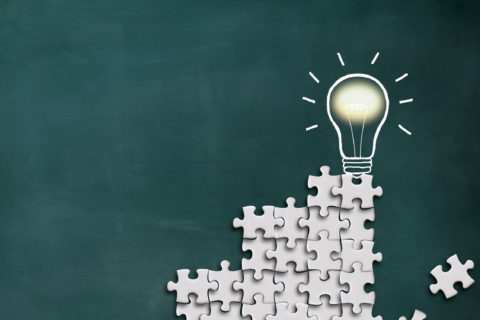The affect heuristic describes when someone makes a decision based on their emotions and how they feel about something – a System 1 response and decision-making shortcut – rather than any logical or seemingly ‘rational’ reasoning.
But why do people do this?
The affect heuristic is a type of mental short cut for decision-making and is related to cognitive ease. Choosing something you like or find most intuitively appealing is easy and requires less mental effort than weighing up more objective information. Therefore, we often make decisions based on emotions such as disgust, sadness, joy or plain desire; going with our gut feeling (System 1) rather than using our System 2 judgement.
Interestingly, this heuristic is a type of evolutionary response; we are wired to react based on our emotions, drawing on emotional images and narratives to help us to estimate risk and benefit quickly.
It’s not just our emotional response to something that can affect our decision-making; we are subject to a broader set of emotional sources. In a recent study, Jennifer Lerner – a psychologist at Harvard University – and her colleagues categorised five different sources for how our emotions might feed into a decision:
- Baseline personality: Characteristics of the decision maker that create a baseline level of emotions
- Emotional response: Our current feelings about characteristics of each option that influence our evaluation (e.g. happiness)
- Future emotions: Predicted emotions from outcomes that have an anticipatory influence (e.g. fear)
- Emotions arising from the decision-making process: The process of contemplating a decision can generate emotions (e.g. warmth or frustration)
- In-context emotional state: Incidental emotions from unrelated factors or preceding events (e.g. anger)
Affect Heuristic Illustrated
Many of these fivesources feature in current applications of the affect heuristic around us. For example, Christmas adverts, such as those by John Lewis and Sainsbury’s, typically leverage more than just one source of emotional decision-making; relying on an emotional response (source 2), emotions arising from the decision process (source 4) and possibly even predicted future emotions (source 3) – due to the anticipation felt during the Christmas period!

Perhaps one of the most topical uses of affect bias recently has been to increase awareness and action to stop the ubiquitous use of palm oil in food products. Iceland’s controversial anti-palm oil festive advert is one example, similarly this example from the Rainforest Action Network is another; pulling at heartstrings as an orangutan and a young deaf girl called Lena get to know each other online. Lena finds out that her favourite food, peanut butter, contains palm oil. When Strawberry the orangutan tells her sadly “your food is destroying my home” it’s almost impossible not to feel empathy and be more driven to avoid palm oil products.
Simple visual examples can be equally powerful. Take Greenpeace’s recent campaign against plastic straws; any creature with an innocent ‘cute factor’ will easily draw an emotional response.
So, what does this all mean?
In market research, it is valuable to understand exactly how consumers are making a decision or a choice. Traditionally, research methodologies have been based on rational approaches. For example, asking the consumer directly why they prefer one product over another and accepting their answer at face value. But when consumers are being influenced by subconscious biases and heuristics, it is important to make sure methods are also capturing behaviours that may seem ‘irrational’. New techniques like self-ethnographies, behavioural immersions, and conjoint analysis all help us to dig further into the mind of the consumer.
When investigating affect bias in particular, we might want to know whether people are responding to their emotional reactions and feelings or are they weighing up more objective inputs when considering a purchase. For marketers, whilst it might feel intuitive to base campaigns around emotional stories and characters, it’s useful to understand the scientific basis for the approach – to reveal what exactly is going on under the bonnet!
NEXT IN THE SERIES: Every three weeks The Behavioural Architects will put another cognitive bias or behavioural economics concept under the spotlight. Our next article features Paradox of choice.
www.thebearchitects.com
@thebearchitects
PREVIOUS ARTICLES IN THE SERIES:
System 1 & 2
Heuristics
Optimism bias
Availability bias
Inattentional blindness
Change blindness
Anchoring
Confirmation Bias
Framing
Loss aversion
Reciprocity
Hot cold empathy gaps
Social norms part 1
Social norms part 2
Commitment bias


